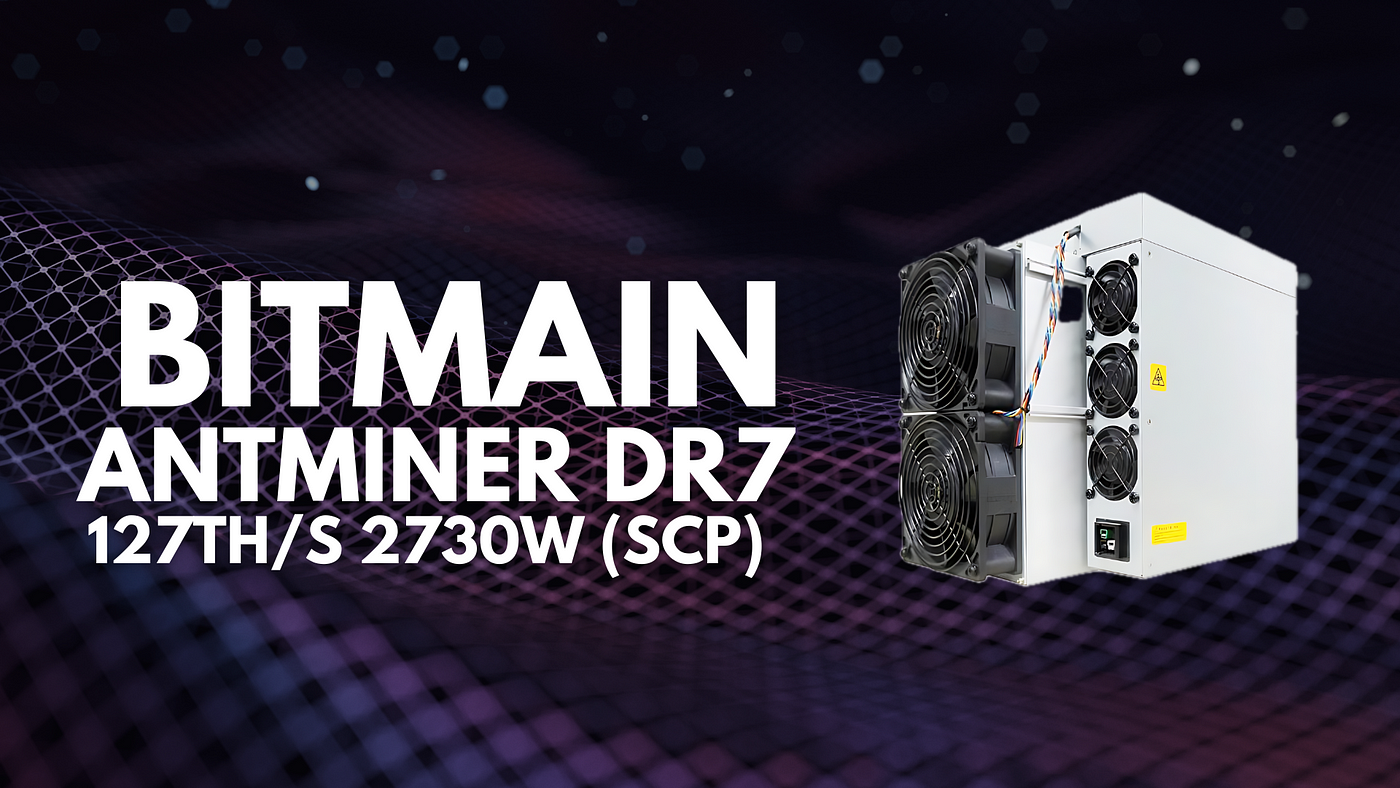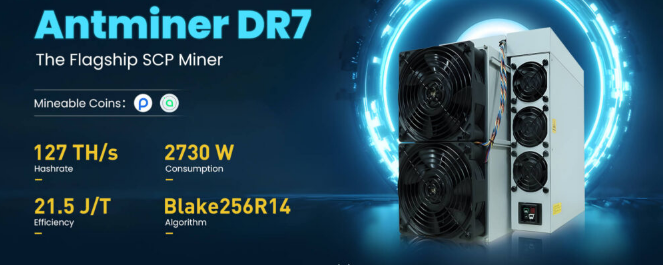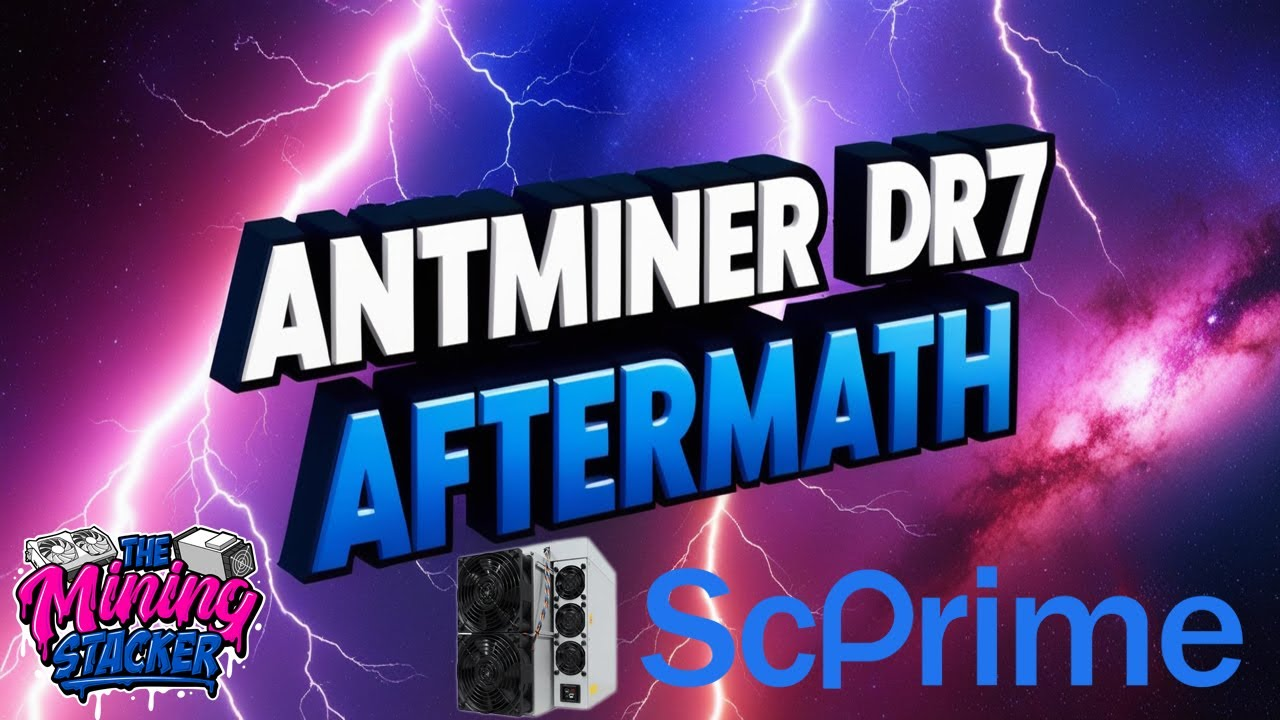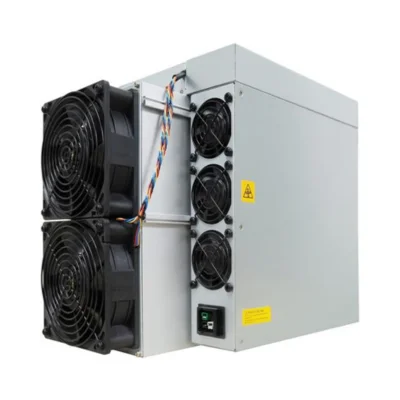How to Troubleshoot Antminer DR7 SCP Miner?
The Antminer DR7 SCP Miner is a powerhouse in the world of cryptocurrency mining, specifically designed for the Blake 256R14 algorithm. With its industry-leading hash rate of 127 TH/s and an energy efficiency ratio of 21.5 J/TH, the DR7 has set new benchmarks for performance and cost-effectiveness. However, like any sophisticated piece of hardware, it can encounter issues that require troubleshooting. This article will guide you through common problems and their solutions, ensuring your Antminer DR7 operates at peak efficiency.
Understanding the Antminer DR7 SCP Miner
Before diving into troubleshooting, it’s essential to understand the key features and components of the Antminer DR7:
- Hash Rate: 127 TH/s
- Power Consumption: 2730W
- Energy Efficiency: 21.5 J/TH
- Algorithm: Blake 256R14
- Design: Modular for easy maintenance
- Brand: Bitmain, known for reliability and quality
These specifications make the DR7 a top choice for both large-scale mining operations and individual miners. However, maintaining this level of performance requires regular monitoring and timely troubleshooting.
Common Issues and Troubleshooting Steps
1. Overheating
Symptoms: Frequent shutdowns, reduced hash rate, or error messages related to temperature.
Causes: Inadequate cooling, high ambient temperature, or blocked air vents.
Solutions:
- Check Ventilation: Ensure the miner is placed in a well-ventilated area. Clear any obstructions around the air vents.
- Clean Fans and Heat Sinks: Dust accumulation can impede airflow. Regularly clean the fans and heat sinks using compressed air.
- Monitor Ambient Temperature: Keep the mining environment cool. Consider using additional cooling solutions like external fans or air conditioning.
- Firmware Update: Sometimes, firmware updates include optimizations for thermal management. Check for updates on the Bitmain website.
2. Connection Issues
Symptoms: Miner not detected by the mining pool, intermittent connectivity, or slow data transfer.
Causes: Faulty network cables, incorrect network settings, or issues with the router.
Solutions:
- Inspect Network Cables: Replace any damaged or low-quality Ethernet cables.
- Check Network Settings: Ensure the miner’s IP address is correctly configured and there are no conflicts.
- Router Configuration: Verify that the router is functioning correctly and has sufficient bandwidth. Consider assigning a static IP to the miner.
- Ping Test: Use a ping test to check the connection stability between the miner and the mining pool.
3. Reduced Hash Rate
Symptoms: Lower than expected hash rate, decreased mining efficiency.
Causes: Overheating, outdated firmware, or hardware malfunctions.
Solutions:
- Temperature Check: Ensure the miner is not overheating, as this can throttle performance.
- Firmware Update: Always run the latest firmware version to benefit from performance improvements and bug fixes.
- Hardware Inspection: Check for any visible damage to the ASIC chips or other components. If necessary, contact Bitmain support or an authorized service provider like Minerfixes.
- Power Supply: Verify that the power supply unit (PSU) is delivering consistent power. Inconsistent power can lead to reduced hash rates.
4. Noise Issues
Symptoms: Unusual or excessive noise from the miner.
Causes: Fan malfunction, loose components, or debris inside the unit.

Solutions:
- Fan Inspection: Check if the fans are functioning correctly. Replace any faulty fans.
- Tighten Components: Ensure all screws and components are securely fastened.
- Clean Internals: Remove any debris or dust that might be causing noise.
- Vibration Dampening: Place the miner on a stable surface to reduce vibrations that can amplify noise.
5. Power Supply Problems
Symptoms: Miner not powering on, frequent reboots, or error messages related to power.
Causes: Faulty PSU, inadequate power supply, or electrical issues.

Solutions:
- PSU Check: Test the PSU with another device to ensure it’s functioning correctly. Replace if necessary.
- Power Requirements: Ensure the PSU meets the miner’s power requirements (2730W). Using an underpowered PSU can cause instability.
- Electrical Circuit: Verify that the electrical circuit can handle the miner’s power draw. Avoid overloading the circuit by connecting too many devices.
- Voltage Stability: Use a voltage stabilizer to protect the miner from power surges or fluctuations.
6. Firmware Issues
Symptoms: Miner not responding, error messages during boot-up, or unexpected behavior.

Causes: Corrupted firmware, failed update, or compatibility issues.
Solutions:
- Firmware Recovery: Follow Bitmain’s firmware recovery process to reinstall the firmware. This usually involves downloading the firmware from the official website and using a USB drive to update the miner.
- Compatibility Check: Ensure the firmware version is compatible with your miner model. Using incompatible firmware can cause issues.
- Factory Reset: Perform a factory reset to restore default settings. This can resolve issues caused by incorrect configurations.
7. Mining Pool Connectivity
Symptoms: Miner not connecting to the mining pool, rejected shares, or low acceptance rate.
Causes: Incorrect pool settings, network issues, or pool-side problems.
Solutions:
- Pool Configuration: Double-check the pool URL, port, and worker credentials in the miner’s configuration.
- Network Stability: Ensure a stable internet connection. Use a wired connection instead of Wi-Fi for better reliability.
- Pool Status: Check the mining pool’s status page or contact their support to rule out any pool-side issues.
- Switch Pools: If the issue persists, try switching to a different mining pool to see if the problem is specific to one pool.
Preventive Maintenance Tips
To minimize the need for troubleshooting, adopt a proactive approach to maintenance:

- Regular Cleaning: Clean the miner’s exterior and interior components every few months to prevent dust buildup.
- Firmware Updates: Regularly check for and install firmware updates to keep the miner running smoothly.
- Environmental Control: Maintain a stable and cool environment for the miner to prevent overheating.
- Backup Configuration: Save a backup of your miner’s configuration settings to quickly restore them if needed.
- Monitor Performance: Use monitoring tools to keep an eye on the miner’s performance and detect issues early.
Conclusion
The Antminer DR7 SCP Miner is a robust and efficient mining solution, but like any complex hardware, it requires proper care and maintenance. By understanding common issues and their solutions, you can ensure your DR7 operates at its full potential, maximizing your mining profitability. Regular maintenance, timely troubleshooting, and staying updated with the latest firmware are key to a smooth and successful mining operation. Whether you’re a seasoned miner or just starting, these tips will help you get the most out of your Antminer DR7.